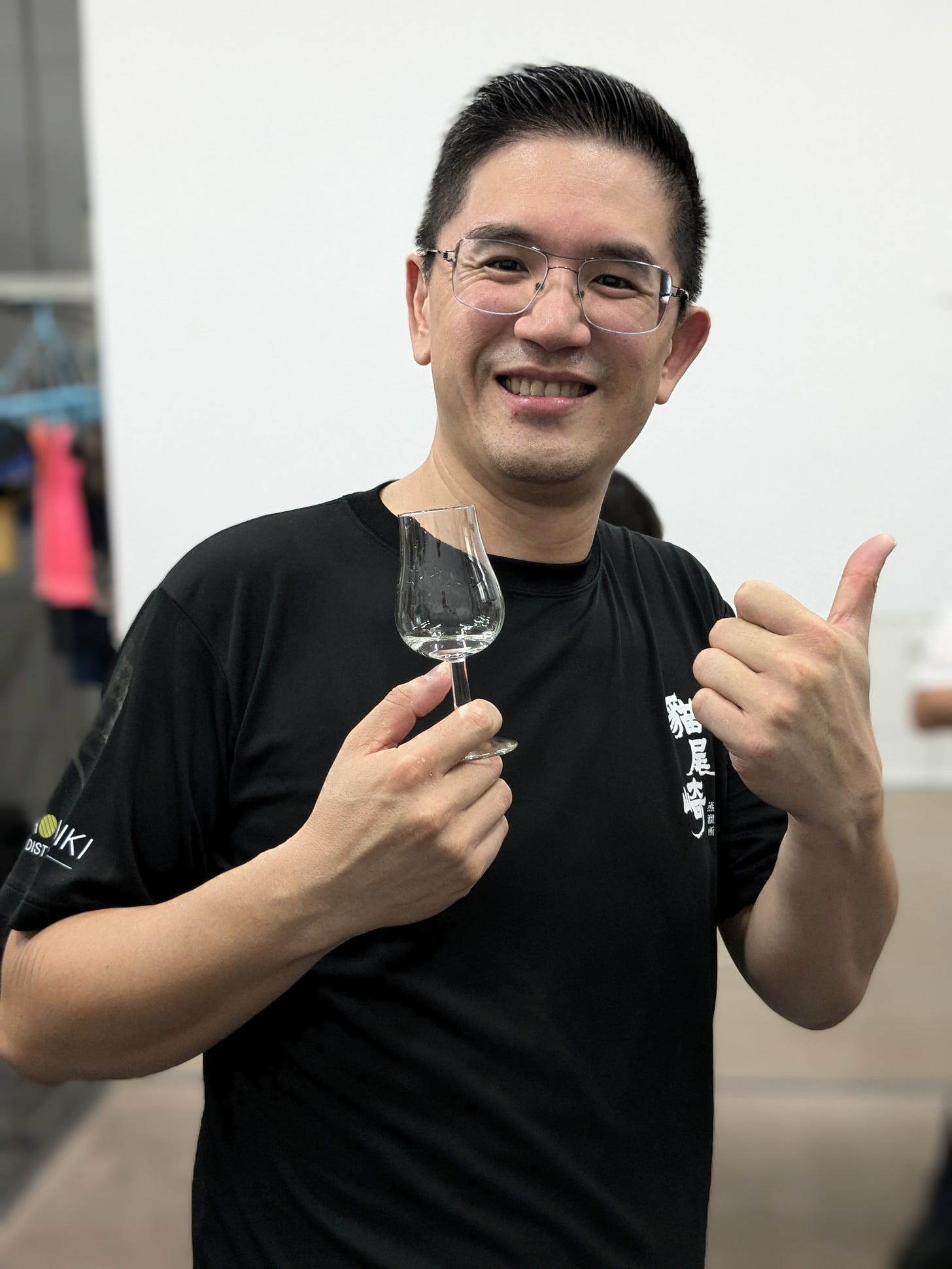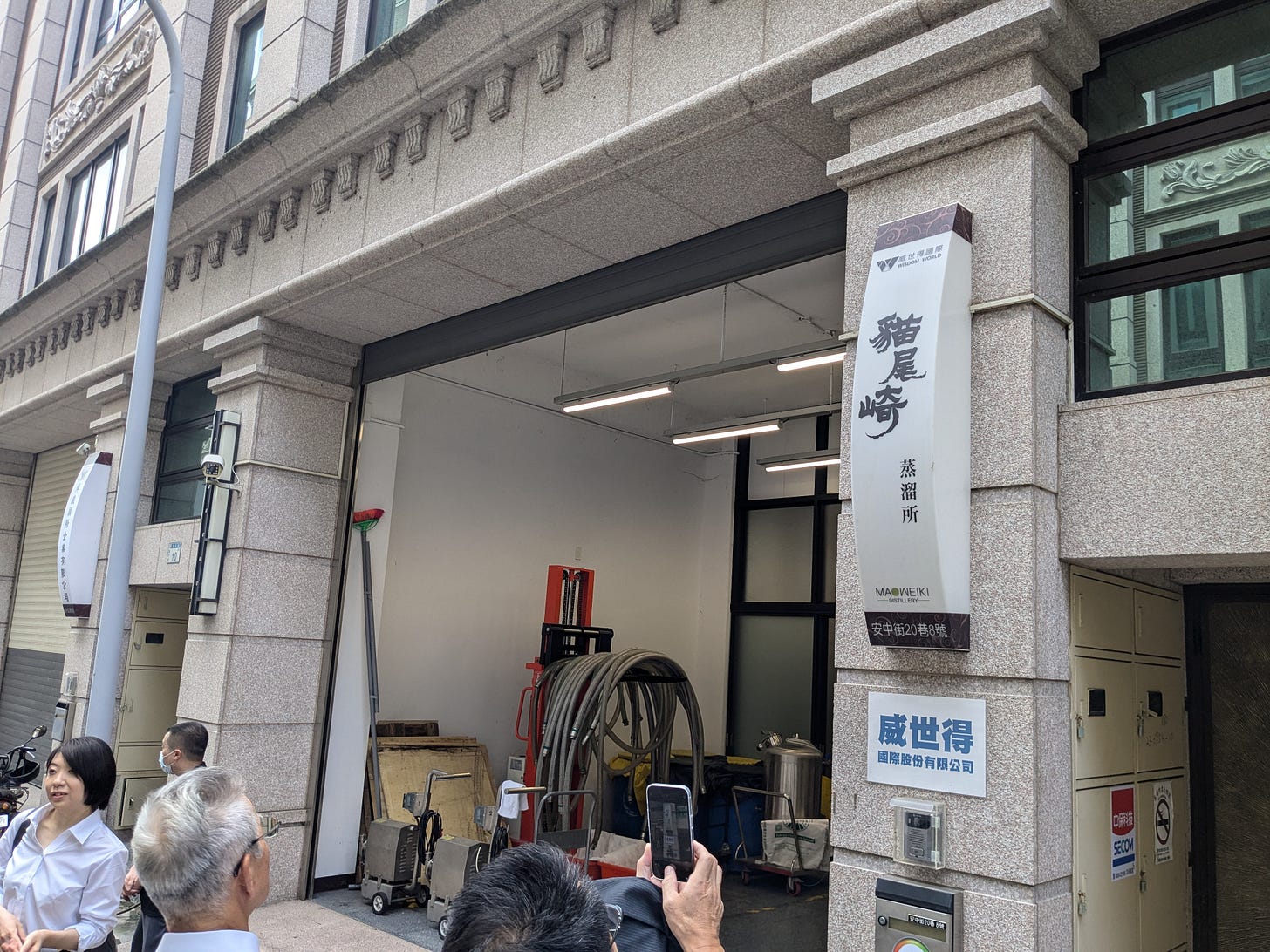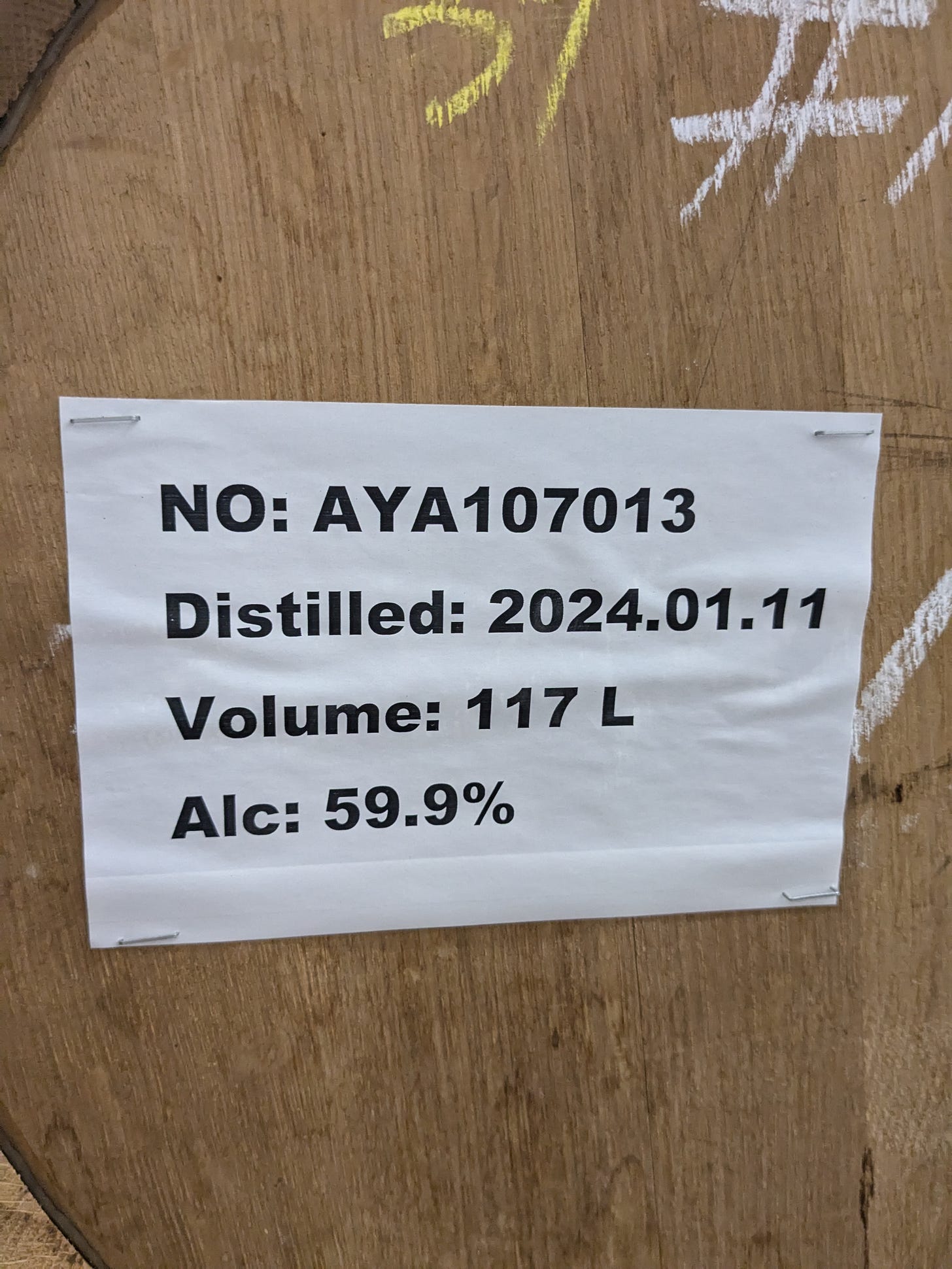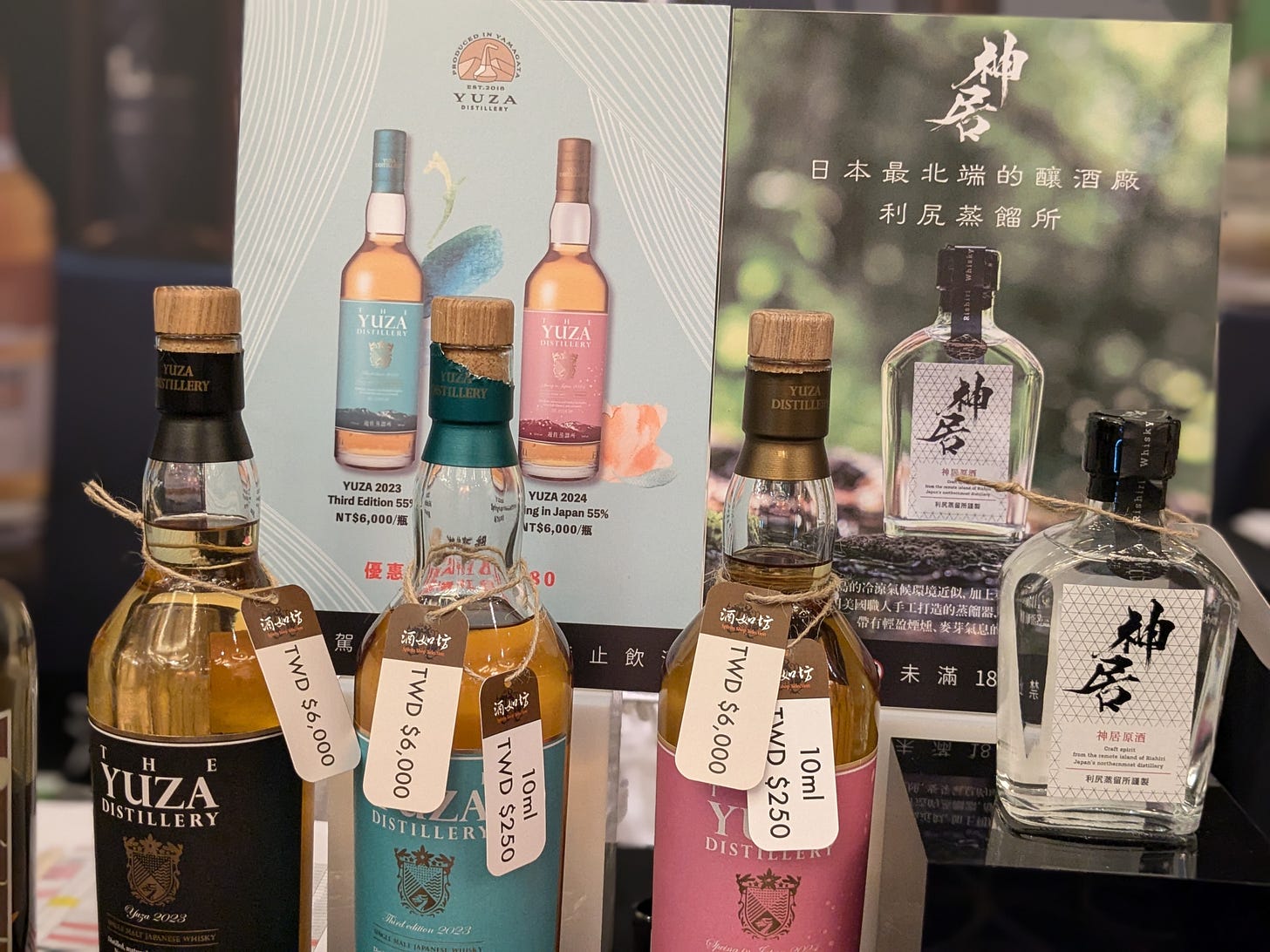Our First Overseas Market: Taiwan
From island to island, Kamui Whisky K.K., from one of Japan's remotest islands to an island of Whisky drinkers.
Hey, I’m Casey. Welcome to our newsletter, sharing the startup journey of Kamui Whisky K.K. We’ve been busy, but when we aren’t overwhelmed, we’ll share a story as we craft up a whisky distillery on a remote, frozen, volcanic island in the most northern part of Japan.
It wasn’t a strategic plan. Heck, little of our journey has been strategic. Rather, it’s been driven by passion and serendipitous encounters with people who share our vision, meeting at just the right time.
Our entry into Taiwan, our first overseas market, followed this same heart-led approach.
Logically, or at least overlaying the logic on a decision that was already made, it makes sense too. Taiwan is the 3rd largest importer of Scotch Whisky, after the US and France, ahead of Singapore and China. With an adult population of 17 million, and an annual whisky spend on Scotch around $350m, that’s almost $21 / year / per adult spent on whisky. I’m sure not everyone is buying a low to mid-range bottle a year, but rather it follows a power law distribution, and serious whisky drinkers are spending serious money.
It was our gracious, kind partners, who have a lot of spirit industry knowledge, that pulled us into the market. But it will be the serious, and deeply knowledgeable, whisky drinkers that will likely keep us there. Plus my love of Taiwan 😉.
The other day, I was able to visit Taiwan, as a special guest of our partners, part of a “delegation” of Japanese craft whisky distillery owners, attending the 2024 Whisky Taste in Taoyuan.
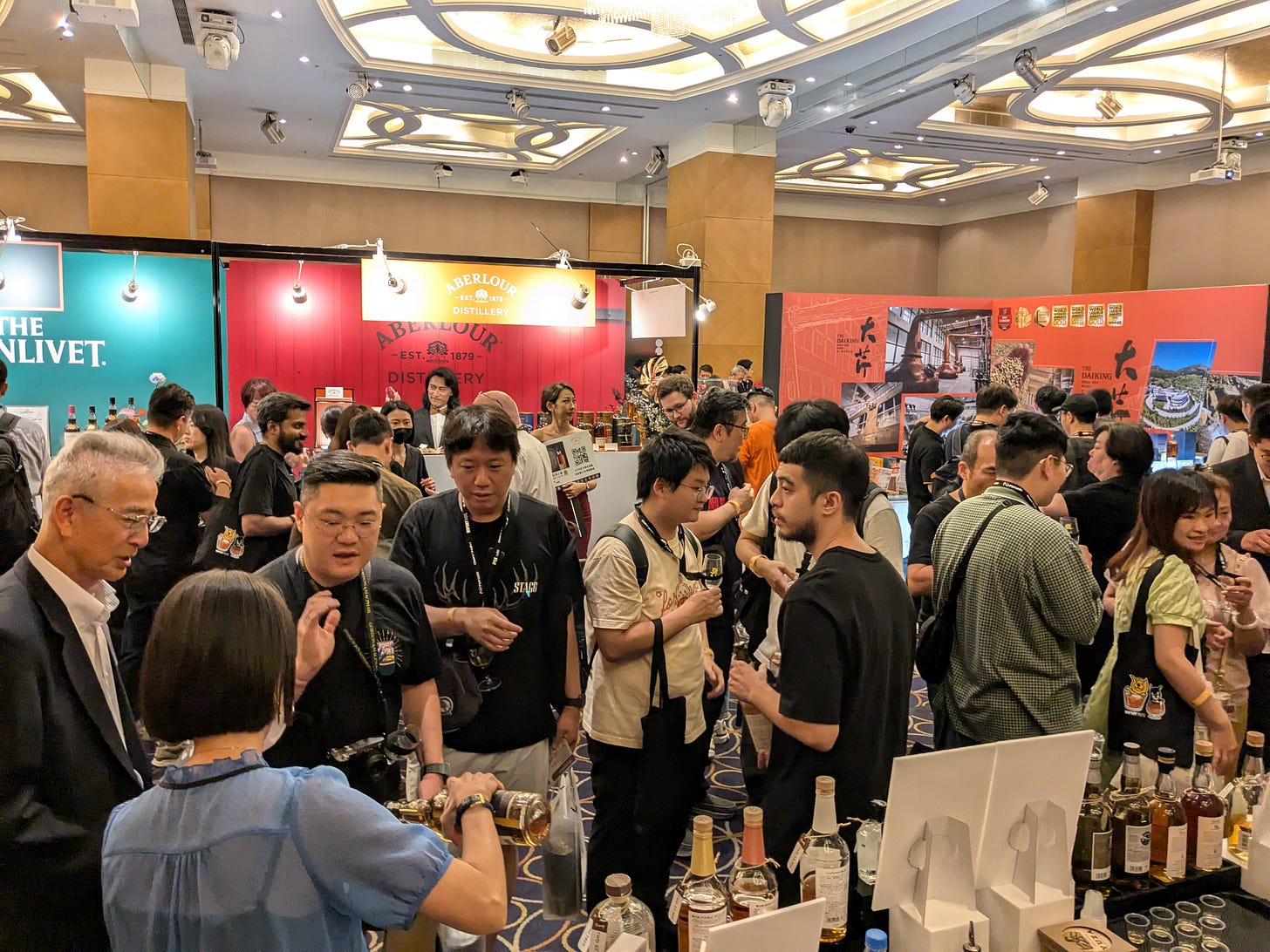
Here are some of my most interesting learnings from the Taiwan trip:
Koshimizu-san, Suntory’s Famous Chief Blender
One of the pleasures from the trip was spending time with Koshimizu-san, Suntory’s legendary chief blender, outside of Japan. It's interesting how it seems easier to connect with influential Japanese figures abroad than at home.
Koshimizu-san is a whisky icon—the man responsible for putting Japanese whisky on the global stage with its first international Gold Medal in 2003. He was also the first Japanese inductee into the Whisky Hall of Fame.
I had the rare opportunity to spend some time up close with him, and one of the trip's highlights was attending a special tasting led by Koshimizu-san himself. It was a value experience to learn directly from a master of the craft.

Here are some of the nuggets of wisdom from Koshimizu-san:
The influence of barrels: Koshimizu-san shared that 70% of whisky’s taste comes from barrel aging, with the remaining 30% from the Genshu (base whisky). He’s spent a large part of his career experimenting with barrels in ways that few could imagine.
Japanese whisky’s aroma: He noted that Japanese whisky tends to have “transparent” aromas, compared to the often more complex aromas of Scotch whisky.
Tasting new Japanese craft whiskies: After his own Suntory blend tastings, Koshimizu-san led us through some newer Japanese craft whiskies. In classic Japanese fashion, he eviscerated ⚔️ most of them without saying anything overtly critical. It was subtly hilarious—and I was relieved that our whisky wasn’t on the tasting menu that day! 😅
The connection between Japanese culture and whisky: Japanese whisky stems from Japan’s culture of eating while drinking1. Japanese aren't typically used to drinking very strong spirits.
How to properly taste whisky: As a blender, Koshimizu-san recommends a 1-to-1 ratio of whisky to water when tasting. He acknowledged that some people hate this approach, but from his perspective, adding water brings out the hidden tastes that lurk in the alcohol.
Master blender’s nose: At one point, Koshimizu-san asked the room if they could detect the smoky flavour in Hibiki, a blend he worked on. Few could. It was a reminder that a master blender has a nose trained far beyond the rest of us.
Hibiki's bottle design: bottle has 24 cuts on it to represent the 24 seasons in Japanese traditional farming. The design emphasizes the importance of time in whisky aging.
The Yamazaki blend: when tasting Yamazaki, which Koshimizu-san helped refine, he explained that the whisky is blended from spirits aged in white oak, young mizunara barrels, and wine barrels. For him, the wine barrel aging adds berry notes—particularly strawberries—to the blend.2
The influence of barrels: Koshimizu-san shared that 70% of whisky’s taste comes from barrel aging, with the remaining 30% from the Genshu (base whisky). He’s spent a large part of his career seemingly running every experiment with barrels you could possibly think of.
Japanese Whisky: The common through point of Japanese Whisky3 is that the aromas are transparent, compared to the often more complex aromas of Scotch whisky..
After his own Suntory blend tastings, Koshimizu-san led us through some newer Japanese craft whiskies. In a very Japanese way, he eviscerated ⚔️ most of them without saying anything overtly critical. It was subtly hilarious — I was relieved that our whisky wasn’t on the tasting menu that day! 😅
Overall, it was a pretty cool experience to be guided by Japan’s most famous master blender—the man behind legendary whiskies like Hibiki and Yamazaki.
Maoweiki: Taiwan’s Newest Distillery
During our trip, we had the pleasure of visiting Maoweiki, Taiwan’s latest startup distillery. Taiwan is home to three distilleries: the renowned Kavalan, a government-run operation, and now, Maoweiki.
Much like us, Maoweiki began as a passion project. Howard, the founder, started the distillery with a deep personal love of whisky. He is also the owner of the hotel where the Whisky Taste festival was held. The hotel features one of the most impressive whisky shops I’ve seen.
Maoweiki was impressive. The pure entrepreneurial spirit of Howard and his team was inspiring. It has been super challenging setting up a distillery here in Rishiri, Maoweiki has seemingly jumped through as many hoops, and scrambled in every way to create their distillery.
Some thing that stood out from the visit:
Angel's share: They have an Angel Share around 10%. Angels in Taiwan are greedy!
Similarities with Kamui Whisky K.K.: Both Kamui Whisky K.K. and Maoweiki are small, innovative distilleries producing award-winning whiskies in regions that had previously never seen a startup.
Zoning laws: In Taiwan, distilleries can only be constructed in factory-designated areas due to zoning laws. Sadly, unlike us, they can’t build in picturesque, natural settings because of these restrictions.
Fire regulations: They barrel their whisky under 60% ABV because of fire regulations. The distillery can only have up to 400L of alcohol over 60% ABV in total, to stay within regulations4. Any more than that and they’d have to invest millions to fireproof all the walls, floors and ceilings.
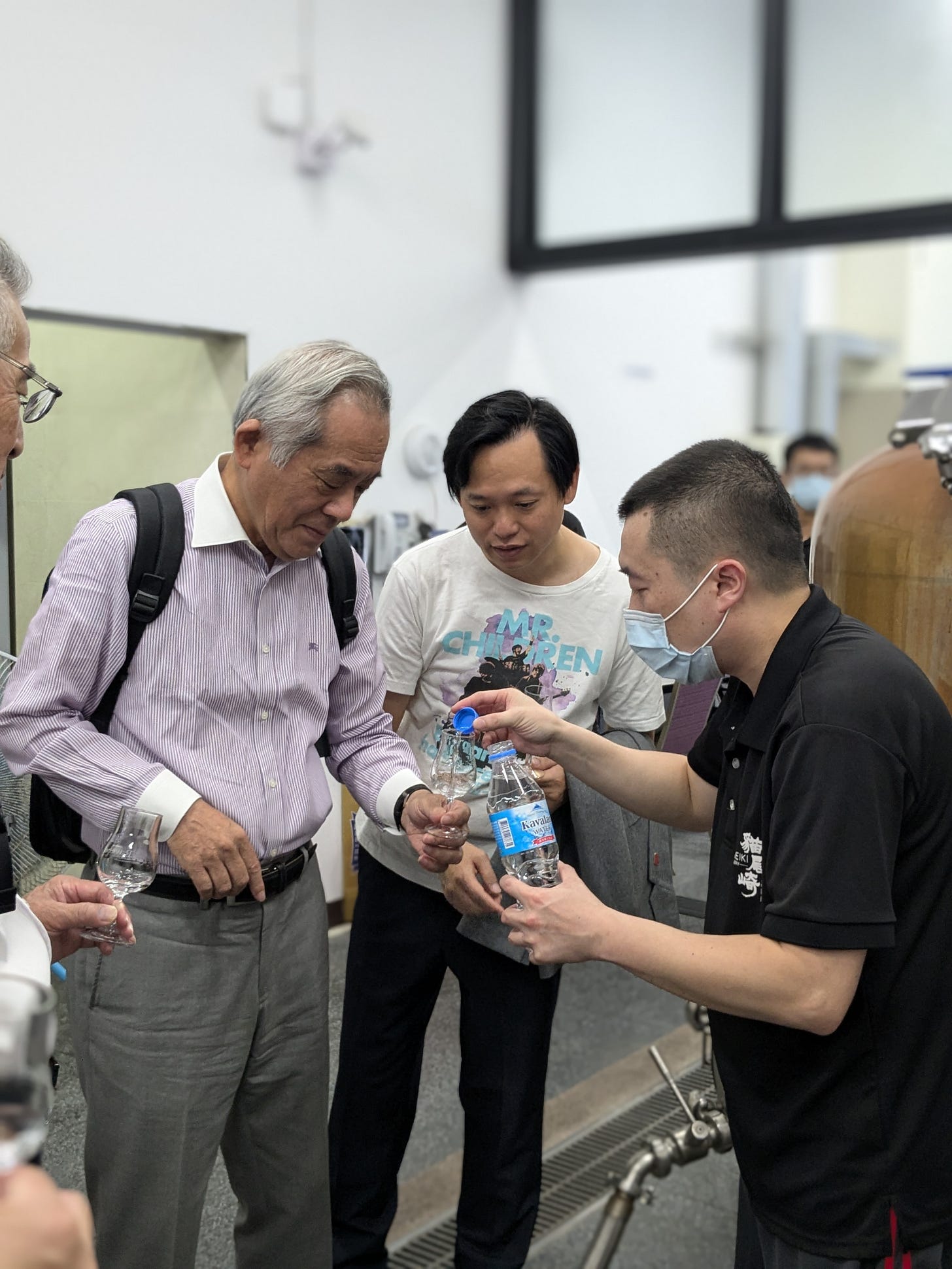

Maoweiki has already won global awards for their young whiskies. I’m a big fan of their spirit, of Howard, and their team. Keep an eye out for their whisky, it’s in small volumes, and hard to find, but worth it if you can get your hands on.
Hopefully, we’ll be able to do a cross-border collaboration with Maoweiki at some point.
More New Friends: Shindo + Yuza
We made some other new friends in Taiwan - Shindo Distillery and Yuza. Getting to spend time with their President’s and team.
I got to spend quite a lot of time with the President of Shindo Distillery, a 220 year old sake maker, who just got in whisky in 2021. A wonderful person, doing very long-term things like planting their own Mizunara forest in Oita.
These relationships built in Taiwan, with Maoweiki, with Shindo, with Yuza will likely lead to something interesting, maybe a special Kamui Whisky K.K. release with one or more of these distilleries in the years to come.
Keep an eye out for what’s ahead.
Thanks, Taiwan. Kamui Whisky K.K. is happy to be in market, and look forward to building our brand in our first overseas market for many, many years to come.
This is a key reason that the Highball was created. Koshimizu-san thinks the Highball is the perfect pairing for sushi 🍣. The reason being, there are so many types of fish when you eat sushi, with a lot of varieties of flavours. The balance of the Highball is the best for all the different fish you encounter. Other alcohols, like wine, can leave too strong a taste and overpower many fish.
The pro-ist of the Pro tasting comments you can use the next time you are out drinking Yamazaki.
There has been an ongoing debate within our distilling team about, “What is Japanese Whisky, exactly?” When I shared this insight from Koshimizu-san they thought it captured a lot, heads nodded, but not the full answer.
Koshimizu-san asked what happens when the ABV goes above 60% in a barrel while the whisky ages. The ABV fluctuates during the aging process. An interesting question. 🤔





